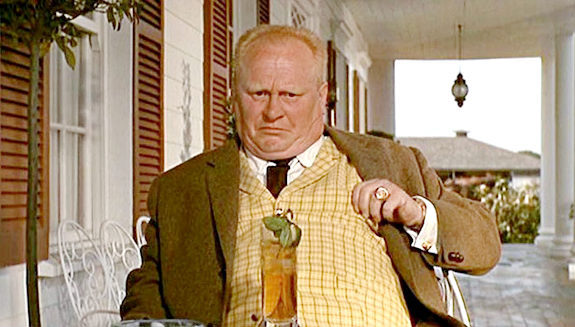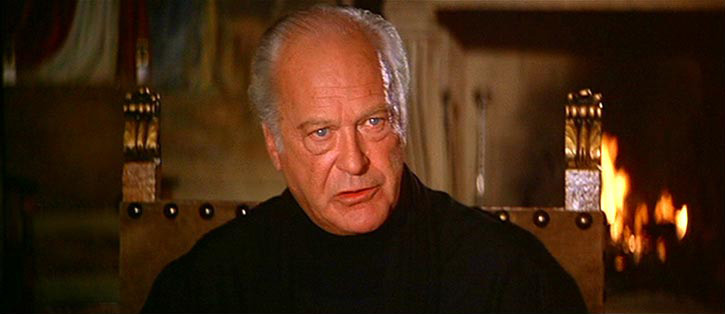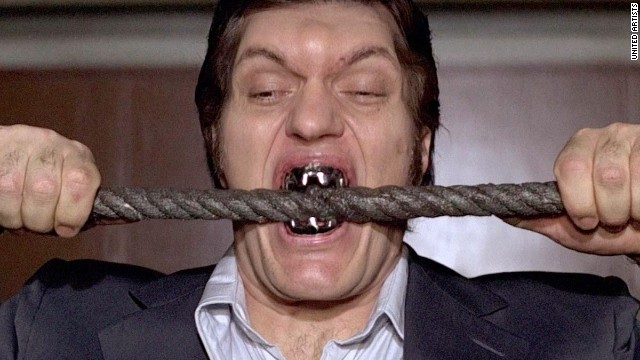Is a James Bond film really only as good as its villain?
James Bond fans love to use the phrase “A Bond film is only as good as its villain.”
As a character, Bond is an unshakable constant. His wit, his banter, his suits, his martinis, and his love of everything with two X chromosomes— he’s been definitively “James Bond” since Sean Connery brought him to life in 1962’s Dr. No and is hanging on to all those characteristics over 50 years later. This steadfast profile leads to fans debating not about Bond himself, but about the actor who should play him next, and whether or not his films are only as good as the villain he faces.
This discussion is ages-old. It’s an idea that shapes spy parodies which have modeled their humor after Bond. It’s an idea that permeates the genre, even making its way into a meta discussion between the characters in Kingsman: The Secret Service (2014), a spy film keenly aware of its origins.
In Kingsman, Valentine (Samuel L Jackson) says, “The old Bond movies. Oh, man. Ah, when I was a kid, that was my dream job: gentleman spy.”
Harry Hart (Colin Firth) replies, “I always felt that the old Bond films were only as good as the villain. As a child, I rather fancied a futuristic colorful megalomaniac.”

But is it true? Are Bond films really only as good as their villains? It’s reasonable to say that with Bond’s unflexing character profile, the villains are the entities that give each title its distinctive flair. Bond is always Bond, but his villains are as wild as can be. Their ambitions are equally grotesque (and usually well-funded), often going to unreasonable lengths to achieve a single goal. They thrive on exaggeration the way Bond thrives on sexual conquest.
Obviously whether or not the villain makes the film is a subjective assessment, but there are certainly some decent Bond titles that don’t boast an all-that-interesting baddie.
The Living Daylights (1987) comes to mind as a relatively good Bond film with rather standard villains. In the beginning of the picture, Bond (Timothy Dalton, fresh in the suit following Roger Moore) protects a KGB officer (Jeroen Krabbé) from a sniper (Maryam d’Abo) and smuggles him across the world. Expected twists and double-crosses occur in traditional Bond fashion as the plot advances, but no villain really emerge as that remarkable—just crazy without substance. That element of extremity that defines other more cartoonish Bond nemeses doesn’t exist, yet the picture still ends up being a decent entry in the Bond catalog and a fine introduction for those who enjoy Dalton’s performance of the man.
The Spy Who Loved Me (1977) is another example of a respected Bond title with a weak main villain. This Roger Moore title centers around a reclusive megalomaniac named Karl Stromberg (Curd Jürgens), who plans to destroy the world and create a new civilization under the sea. Bond teams up with a Russian agent, Anya Amasova (Barbara Bach), to stop Stromberg. Stromberg is universally praised as one of Bond’s stupidest enemies. Though he fits the bill of grandiose evil insanity that defines classic Bond villains, hoping to start World War III and build an underwater civilization after the genocide of Earth’s remaining citizens, he’s essentially just a wheezing old man who hardly gets out of a chair for the entire film, and his final confrontation a snoozefest. Stromberg’s best quality is that Bond kills him by shooting him in the penis.

Much cooler than Stromberg is his henchman Jaws (Richard Kiel), a towering monument of a man with a full set of metal teeth who would go on to reprise his role in Moonraker (1979).
The pendulum swings both ways, too, as there are a number of poor Bond films that have pretty decent villains, further positing that one does not necessarily make the other. Christopher Lee as Scaramanga in The Man With the Golden Gun (1974) was a notable three-nippled adversary for Bond, but the film overall was weak. Lee portrayed the character perfectly as it was written in the novels, becoming a fan favorite on screen and the chief redeeming quality in a so-so film.
And of course, it’s worth mentioning Christopher Walken as Max Zorin in A View to a Kill (1985), the platinum blonde yuppie by-product of Nazi eugenics experimentation who attempted to trigger an earthquake to flood Silicon Valley. That’s exactly the type of bananas thinking that makes for a memorable Bond villain, though the film carries one of the worst overall critical ratings in the entire franchise. He’s scary and laughable at the same time, which is exactly how he should be.
Even Moonraker, one of the entries in Bond lore people tend to remember (albeit often due to its detestable cheesiness), has a solid villain in Hugo Drax (Michael Lonsdale).
The truth is it’s all about casting and construction, as with any other film. A good actor can bring a creative villain to life even if the film is poor, and bad material can make even a talented actor suffer under the weight of an uninteresting foe. What’s true is that as Bond remains steadfast, his villains typically reflect the cultural landscape of the time of their release. They reflect real-world fears and concerns on a global scale, turning believable threats into buffoonish monsters that are thwarted by a universal constant. The idea that a lone man in a fancy dinner jacket can take down scores of some of the world’s most diabolical and intelligent villains is, of course, insane. But it’s the idea of a reliable, trusted authority capable of facing all the frightening challenges of the time that makes Bond as a franchise work. The villain becomes part of that equation, and the combination of casting, gadgetry, storytelling, and social relevance all contribute to whether or not a Bond villain makes a lasting memory on the franchise’s legacy.

Sydney Morning Herald writes about this, saying, “What the villains stand to gain is another of the franchise’s challenges. Necessarily, their crimes reflect the anxieties of their times: drug moguls were the enemy in Live and Let Die (1983) and Licence to Kill (1989) while Tomorrow Never Dies (1997) featured a media baron so gleefully conspiratorial – he is organizing his own war off the coast of China so that he can be first to cover it, thus cracking the lucrative Chinese television market – that you wonder he doesn’t have a moustache to twirl. For all of them, it was a matter of personal gain: wealth, power, more opportunities to paint girls gold. One theory about the James Bond phenomenon, discussed by Bond scholar Christopher Lindner in his book on the subject, is that the Bond adventures responded to vast anxieties embracing the entire world: global crime corporations, world wars, currency crises that will ruin whole economies, biological warfare and now, of course, our post 9/11 fears of terrorism. They did this in a winning formula involving sex, violence, style and humour.
That truth also implies that a person’s individual environment and experience may color their interpretation of a Bond villain. If the wickedness they are attempting resonates on a more intimate level with viewers in one area of the world than another, the villain may be more effective than one with less immediacy.
Whatever your personal take may be on the best and worst Bond villains, there is certainly argument to be made that the equation is more complicated than a direct correlation. The villain doesn’t necessary make the film—nor does the film necessarily require a legendary villain to be good.

